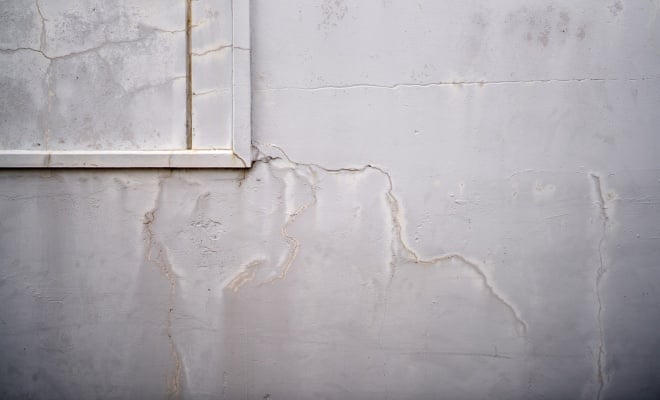Have you ever put off fixing a tiny drip under the sink because it didn’t seem urgent? Or maybe you ignored that squeaky door because, well, you got used to it? Here’s the thing: houses have a way of punishing neglect. The small stuff never stays small for long. That slow drip can rot wood and invite mold. That squeak could point to a hinge that eventually tears loose. Before you know it, what could have been a $10 fix becomes a $500 headache.
This is the reality of homeownership in today’s world. Everything feels more expensive. Inflation has raised the price of materials, labor, and even the gas needed to get repair trucks to your driveway. At the same time, many people are working longer hours or juggling multiple responsibilities. It’s easy to let minor problems slip through the cracks. But ignoring them doesn’t save time or money—it often multiplies both. In this blog, we will share why addressing small home issues quickly matters, how delays can spiral into costly repairs, and the practical steps you can take to stay ahead without overwhelming yourself.

When little problems hide bigger ones
Small issues are dangerous because they’re rarely isolated—a water spot might mean a leaky roof, peeling paint could hide moisture damage, and tiny foundation cracks can invite water that weakens your home over time.
HVAC systems are especially prone to this snowball effect. That faint rattle you hear when the air conditioner turns on may seem like nothing. But mechanical noises often indicate loose parts, airflow problems, or failing components. Homeowners who shrug them off risk higher energy bills, frequent breakdowns, or worse, full system replacement. Professionals warn of common AC issues to watch out for like clogged filters, refrigerant leaks, or faulty thermostats. Each starts small but grows quickly if ignored.
Think of it like your health. A slight toothache doesn’t seem urgent, but skip the dentist long enough and you’ll need a root canal. Houses operate on the same principle. Small annoyances are often early warning signs that something deeper is wrong. Addressing them promptly protects not just your wallet but also the comfort and safety of everyone living in the space.
Why procrastination is more expensive now
In the past, delaying repairs might have cost you a little more in the long run. Today, it can cost you a lot. The price of building materials has surged in recent years. Lumber, drywall, and copper piping all saw dramatic spikes, and while some prices have eased, many remain higher than pre-pandemic levels. That means the longer you wait, the bigger the financial hit when you finally deal with the problem.
There’s also the issue of labor shortages. Skilled trades like electricians, plumbers, and HVAC techs are in high demand and often booked weeks in advance. If your “minor issue” becomes an emergency, you’ll pay premium rates just to get someone on site quickly. Emergencies rarely happen at convenient times either. Burst pipes and broken heaters have a habit of showing up on holidays or weekends when rates are even higher.
Insurance companies are catching on as well. Many policies won’t cover damage if they determine neglect was a factor. That water damage claim may be denied if the adjuster finds evidence of long-term leaks. What looks like saving money now could mean footing the entire bill later.
The ripple effect inside the home
Small issues don’t just strain your wallet—they create daily stress. A drafty window makes your living room uncomfortable. A leaky faucet keeps you awake at night. A noisy AC unit interrupts work calls or family movie nights. Over time, these annoyances chip away at your sense of peace at home.
There’s also the psychological factor. Research shows clutter, unfinished projects, and unresolved household problems increase stress levels. When you keep walking past that broken tile or loose railing, it’s a constant reminder of something undone. That lingering stress affects your mood, productivity, and even relationships. Addressing the little things isn’t just about protecting your investment—it’s about protecting your sanity.
Practical steps to stay ahead
So how do you avoid falling into the trap of neglect? Start small. Create a running list of minor issues you notice around the house. Set aside one weekend a month to tackle a few. Many fixes don’t require professional help—tightening screws, replacing filters, sealing cracks, or caulking gaps are all manageable DIY tasks.
For systems like plumbing, roofing, and HVAC, schedule annual inspections. Professionals can catch small issues before they spiral. Yes, the upfront cost stings, but it’s far less than the price of major repairs. Think of it as buying peace of mind.
Another smart move is to set aside a home maintenance fund. Experts recommend budgeting at least 1% of your home’s value annually for repairs and upkeep. Having money earmarked for fixes reduces the temptation to delay.
Finally, change how you think about small issues. Instead of seeing them as annoyances you’ll “get to later,” view them as alarms. Each squeak, drip, or rattle is your home telling you something. Responding quickly isn’t just responsible—it’s cheaper, easier, and less stressful than waiting until it’s too late.
The bigger picture: homes as long-term investments
There’s a broader conversation here, too. Homes are often the largest investment people make in their lifetime. Yet too many treat maintenance like an afterthought. Ignoring small issues erodes the value of that investment. Buyers notice the details during inspections, and what you thought was cosmetic could shave thousands off your resale price.
This ties into larger societal trends. With rising interest rates and housing shortages, many families are holding onto their homes longer than planned. That makes maintenance even more important. You may not be moving soon, but your house still needs care to serve you well for the long haul.
And let’s not forget climate. Extreme weather events—heat waves, heavy rains, and cold snaps—are stressing homes in ways builders didn’t always anticipate decades ago. Small vulnerabilities like a loose shingle or minor leak can turn into massive damage during storms. Proactive maintenance isn’t just wise anymore—it’s necessary in a changing environment.
Listening to the little signs pays off
The irony of homeownership is that small problems are often the easiest and cheapest to fix, yet they’re the most ignored. People wait until they’re big, expensive, and unavoidable. But those who pay attention early save themselves money, stress, and frustration.
A healthy home is one that communicates with you. The trick is learning to listen. That drip, squeak, or rattle isn’t random—it’s a message. The sooner you answer it, the more control you have over the outcome.
So the next time you’re tempted to ignore a little problem around the house, think of it this way: you’re not saving time. You’re borrowing trouble. And the bill always comes due.
We hope you found this blog post on Why Ignoring Small Issues at Home Leads to Bigger Repairs, useful. Be sure to check out our post on Cooling System Issues Every Homeowner Should Watch For for more great tips!
Have Experience in the Moving Industry? Want an Additional Income Stream? Work With All Around Moving!
Partner with All Around Moving Services and join the Work With Us program. We’ll help you make money arranging moving services, by establishing your own moving consultant business operation. Read the simple terms by clicking here to learn more about it.





